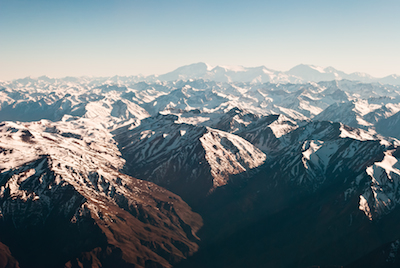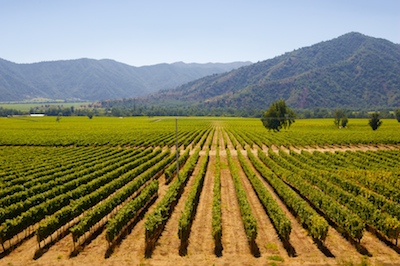Chile’s astonishing geography holds the key to why it is known as the Winemaker’s Paradise. Stretching nearly 5000 km along the southwestern coast of South America, its width never exceeds 250 km, making the country more than eighteen times longer than its widest point.
The most obvious factor in Chile’s remarkable slenderness is the massive, virtually impassable wall of the Andes, a mountain range that is still rising and that contains more than 50 active volcanic peaks. The west is bordered by the Pacific Ocean, and all along its length Chile is marked by a narrow depression between the mountains and the sea.
To the north the land rises and becomes more arid, until you reach the formidable Atacama Desert, one of the most inhospitable regions on earth. Indeed, the Atacama Desert may be the oldest desert on earth, and has experienced extreme hyperaridity for at least 3 million years, making it the oldest continuously arid region on earth.
 To the south just the opposite transformation takes place: the land falls away, and the region between mountains and ocean fades into the archipelagic maze that terminates in Chilean Patagonia.
To the south just the opposite transformation takes place: the land falls away, and the region between mountains and ocean fades into the archipelagic maze that terminates in Chilean Patagonia.
Chile’s southern extremity is marked by Cape Horn, a treacherous headland surrounded by almost continuously storm-tossed seas and passable only through the foggy stillness of the Strait of Magellan.
In the centre of the country is a long and expansive river valley, a five hundred mile corridor occupied in the north by vineyards, and in the South by great farms, primeval forests and enchanting lakes.
Winemaker’s Paradise
Chile has long since been known as the Winemaker’s Paradise. Located squarely within the 30th and 50th degree of latitude, its climatic isolation protects it from diseases and pests and creates a near perfect environment for growing grapes.
Temperatures in Chile rarely rise above 35C, due to the cooling influences of the Andes and the Humboldt Current, a major cool current that runs north along the Chilean coastline toward the equator and the most productive marine eco-system in the world.
 Proximity to the Pacific Ocean, whose cold waters generate fog, cloud cover and cooling breezes, also play an important role in determining most of Chile’s wine growing regions as Cool Climate. Wines from cooler climates generally have higher natural acidity, and are more refined and elegant than wines from warm climates.
Proximity to the Pacific Ocean, whose cold waters generate fog, cloud cover and cooling breezes, also play an important role in determining most of Chile’s wine growing regions as Cool Climate. Wines from cooler climates generally have higher natural acidity, and are more refined and elegant than wines from warm climates.
Most grape growing is concentrated in the central regions of Chile, to the north and south of Santiago, where annual rainfall is only 30 cm per year. Water is plentiful in the form of melted snow from the Andes mountains.
The climate is primarily Mediterranean, with the majority of the rainfall occurring in the winter months. A near 300 day growing season and rain free harvest make Chile’s climate ideal for growing grapes.
All of these geological and geographical factors contribute to Chile having one of the most diverse set of microclimates and soils anywhere in the world. From ocean to mountains, from desert to ice shelf, Chile offers climates and terroirs so heterogeneous, that one cannot fail to be astounded by the breadth of what this land has to offer.
